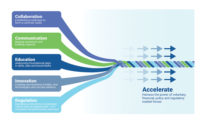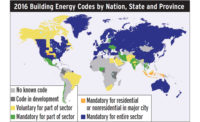The Charles Pankow Foundation recently released guidance to building owners, developers, designers and contractors interested in considering the embodied carbon in mechanical, electrical and plumbing systems. The three reports, which address commercial office buildings and tenant improvement projects in the Pacific Northwest, are part of a broader $155,000 study for calculating embodied carbon in construction.
The rationale is that MEP and TI are often replaced every 10 to 20 years, and the accumulated carbon impacts can be significant, according to the reports' principal investigators, who are leading the broader Pankow study, Life Cycle Assessment (LCA) for Low Carbon Construction. The PIs are Kate Simonen and Hyun Woo “Chris” Lee of the University of Washington.
LCA Practice Guide
In addition to the Pankow foundation, Skanska USA and the Oregon Dept. of Environmental Quality are funding the overall study. The project, which will create an LCA practice guide and establish embodied carbon benchmarks for buildings, provides a pathway for those interested in integrating embodied carbon into life cycle-based decisions.
The reports are available for free download at the Pankow website. Estimates of Embodied Carbon for Mechanical, Electrical, Plumbing and Tenant Improvements summarizes study results, compares findings with other benchmark studies and discusses their implications, says Pankow.
Life Cycle Assessment of MEP in Commercial Office Buildings provides range estimates of embodied carbon content in material quantities attributed to MEP and offers a free calculation tool, available for download. Life Cycle Assessment of TI in Commercial Office Buildings offers an embodied carbon calculation methodology and estimates material quantities and environmental impacts attributed to finishes, furniture and fixtures. It also provides a discussion of the results. A calculator for estimating LCA impacts for TIs also is available.






Post a comment to this article
Report Abusive Comment